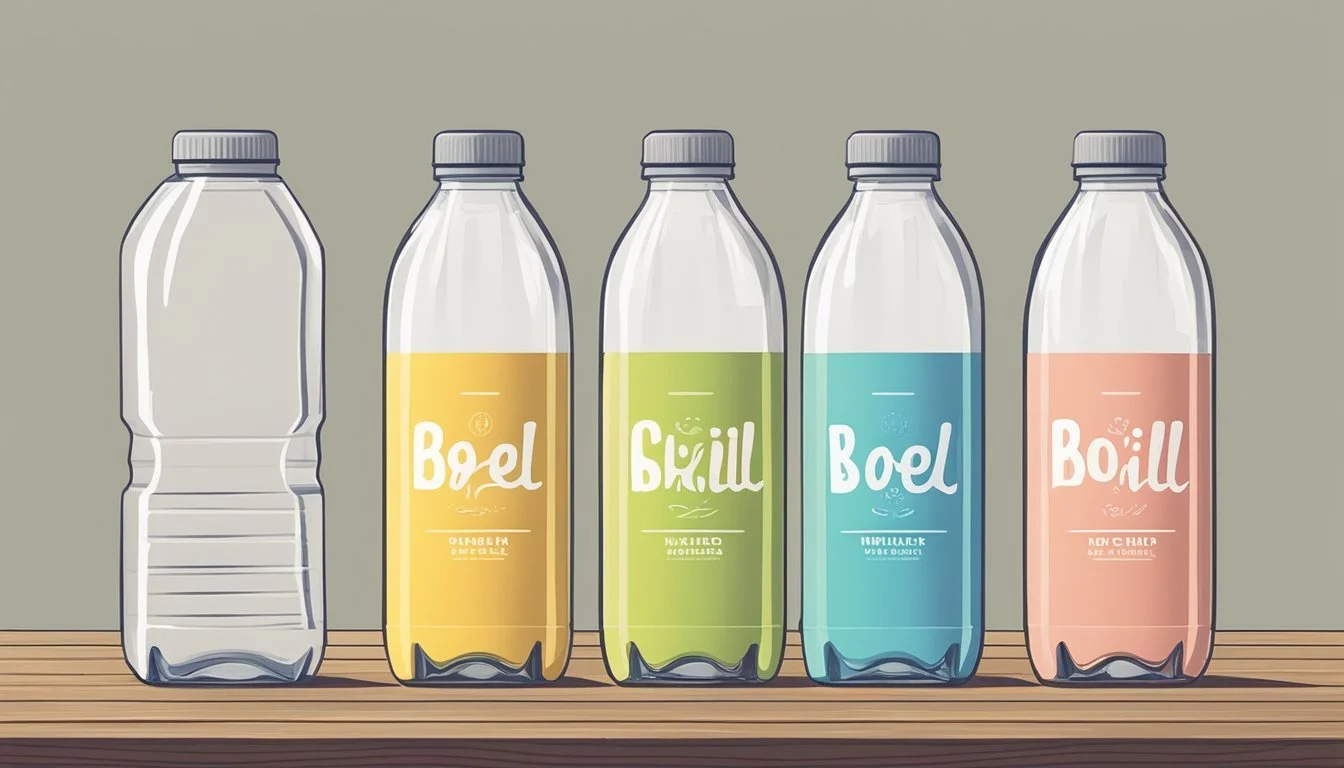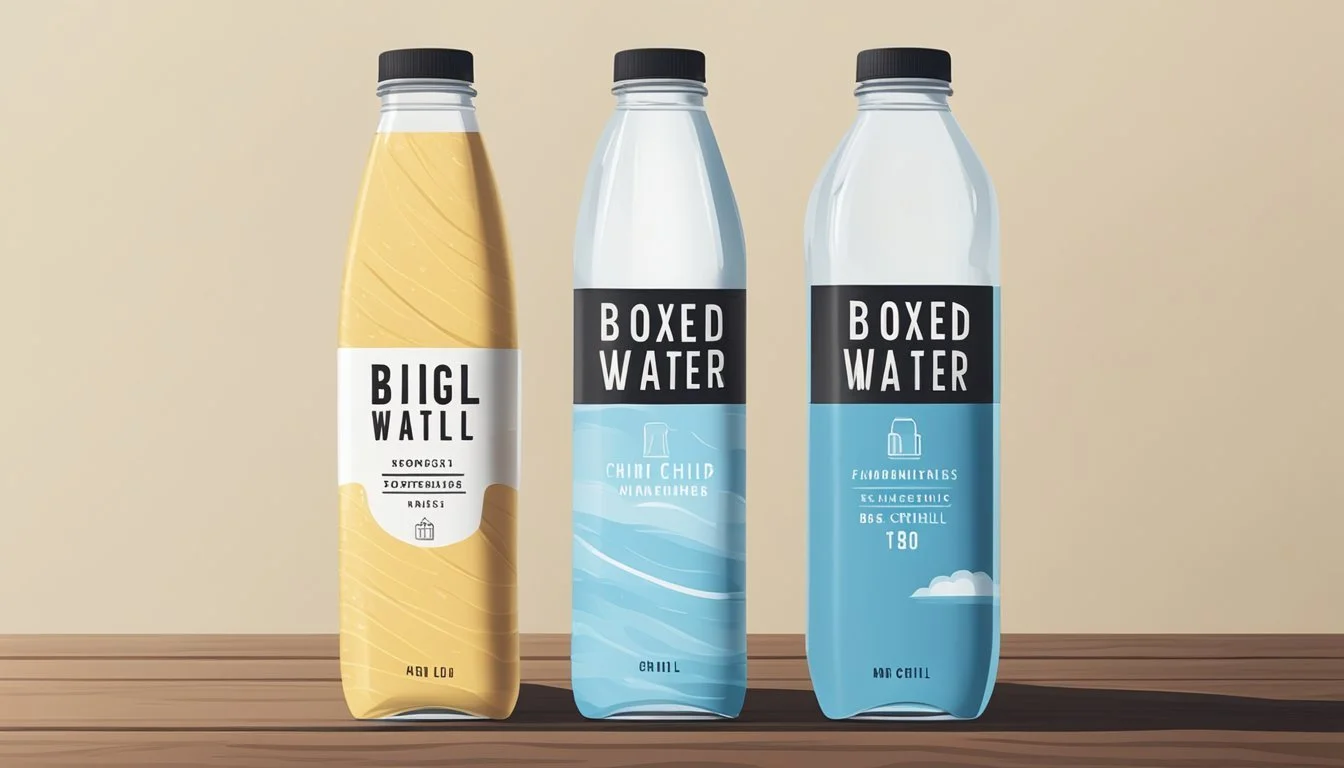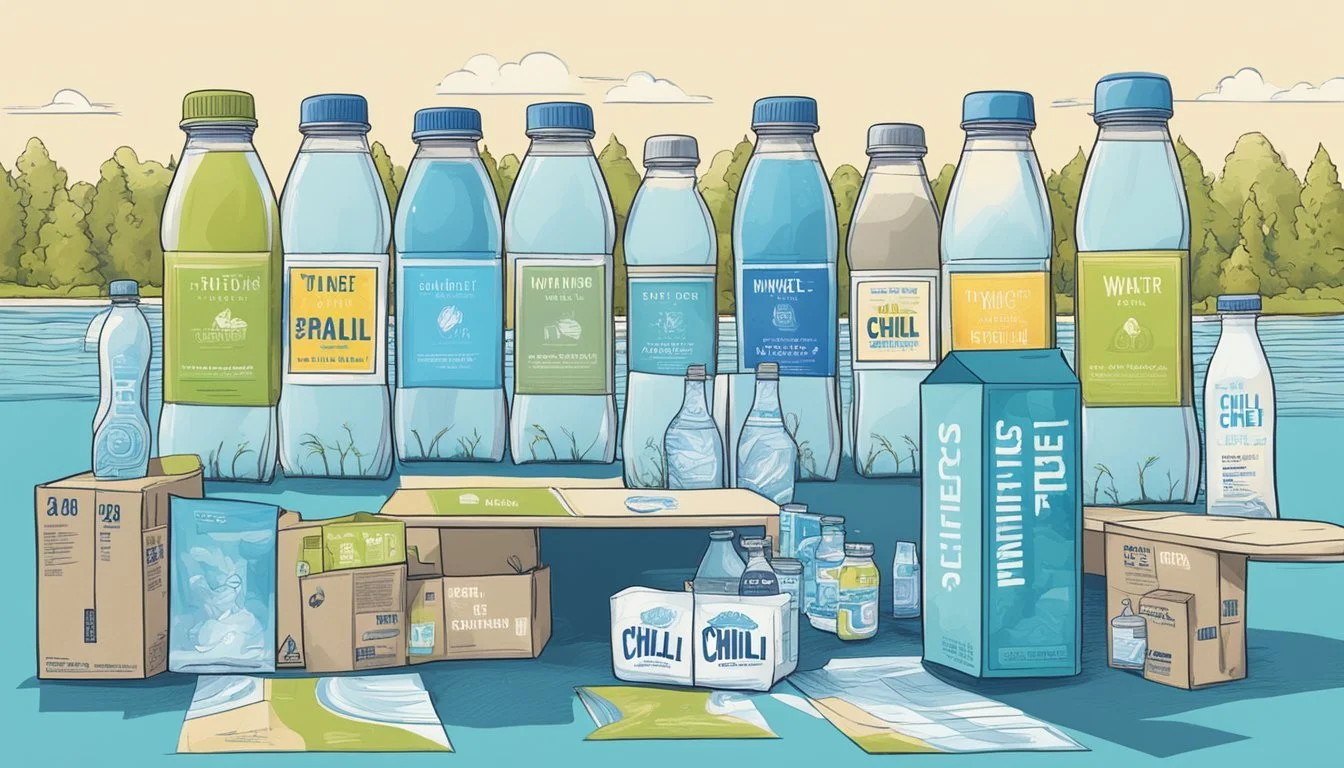Boxed Water vs. Big Chill
Which Bottled Water is Better for You?
When it comes to choosing between Boxed Water and Big Chill bottled water, many consumers are seeking alternatives that offer both taste and sustainability. Boxed Water excels with its crisp, neutral flavor and environmentally friendly packaging made primarily from paper, which aims to reduce the harmful impact of traditional plastic bottles.
Big Chill, on the other hand, is known for its reliable purity and consistent taste, though some might notice a slight tang at the end. For those who prioritize environmental factors without compromising on refreshment, Boxed Water might emerge as the better choice.
The unique packaging of Boxed Water makes it not just a practical option but also a conversation starter, showing a commitment to reducing plastic waste. Meanwhile, Big Chill continues to attract those who prefer the convenience and familiarity of plastic bottles. By comparing these two options, readers can make an informed decision about which water aligns better with their values and preferences.
Understanding Boxed and Bottled Water
Boxed and bottled water products have distinct differences in packaging materials, environmental impact, and taste. The following sections explore the evolution of bottled water and the specifics of boxed water.
The Evolution of Bottled Water
The bottled water industry has seen significant transformations over the years. Initially, glass bottles were used for their durability and reusability. However, plastic soon became the dominant material due to its lightweight and cost-effective nature.
Despite the convenience plastic offers, the environmental repercussions are substantial. Millions of plastic bottles end up in landfills and oceans each year, contributing to pollution and harm to marine life. Efforts to recycle plastic have increased, but the overall recycling rate remains low.
Bottled water itself varies in source, including spring, mineral, and purified variants. Companies like Big Chill emphasize purity and mineral content, catering to different consumer preferences. The industry's growth can be attributed to increasing health awareness and demand for convenient hydration options.
What is Boxed Water?
Boxed water represents a shift towards sustainability in the drinking water market. Introduced by Boxed Water in 2009, this product uses packaging mainly composed of renewable resources. The containers consist of 74% paper, 1% aluminum, and 25% plastic film, making them a more eco-friendly alternative to traditional plastic bottles.
The paper-based packaging is fully recyclable and sourced from well-managed forests. The added aluminum and plastic layers ensure the container is waterproof and sealed. Brands such as Boxed Water promote their product as better for the environment due to lower carbon footprints and reduced plastic waste.
Consumers have responded positively to boxed water, noting its refreshing taste and appealing design. Its popularity is growing among environmentally conscious individuals looking for sustainable drinking water solutions.
Environmental Impact and Sustainability
Boxed Water and Big Chill offer contrasting approaches to sustainability and environmental impact. This section explores their carbon footprints, recycling and waste management practices, and shift towards sustainable packaging.
Assessing the Carbon Footprint
Boxed Water uses cartons composed mainly of paper, approximately 74%, which contributes to a lower carbon footprint compared to traditional plastic bottles. The production process aims to minimize emissions by using renewable resources.
Big Chill, relying on traditional plastic bottles, typically generates a higher carbon footprint. Plastic bottle production involves significant energy use and the release of greenhouse gases. This higher energy consumption results in a larger impact on the environment.
Assessing carbon footprints involves understanding the entire lifecycle of the product. Boxed Water's commitment to renewable resources aids in reducing their overall impact, while Big Chill's reliance on plastic continues to challenge environmental sustainability efforts.
Recycling and Waste Management
Boxed Water emphasizes recyclability with cartons designed for easy recycling. They incorporate elements like 1% aluminum and 25% plant-based plastic alongside the paper. These components enhance recyclability, assuming facilities are available.
Big Chill bottles, made from 100% plastic, contribute significantly to single-use plastic waste, a persistent environmental problem. While PET plastic is recyclable, it often ends up in landfills due to inadequate recycling practices and infrastructure.
Effective waste management relies not only on the recyclability of materials but also on consumer practices and local recycling capabilities. Boxed Water's approach promotes a manageable waste cycle, contingent on proper infrastructure, in contrast to the more problematic plastic waste from Big Chill.
The Shift Toward Sustainable Packaging
Boxed Water leads in sustainability by opting for cartons that are 92% plant-based. Using paper sourced from responsibly managed forests further enhances their environmentally friendly profile. This shift reflects a broader commitment to reducing reliance on fossil fuels and single-use plastics.
Big Chill remains reliant on plastic packaging. Though some innovations include recycled PET bottles, the impact of single-use plastics remains a significant challenge. The shift towards plant-based or alternative materials is less apparent in Big Chill’s strategy.
The transition to sustainable packaging involves not only material selection but also consumer and industry adoption. Boxed Water's innovative approach highlights its potential to drive significant change, whereas Big Chill's progress appears slower in moving away from conventional plastic usage.
Health and Safety Considerations
When comparing Boxed Water and Big Chill, it is important to evaluate the health and safety aspects, including the quality of the water sources and potential contamination risks.
Water Quality and Sources
Boxed Water and Big Chill source their water differently. Boxed Water primarily uses purified water, which undergoes extensive filtration processes such as ultraviolet, carbon, and reverse osmosis to remove impurities.
Big Chill often sources its water from natural springs and municipal water supplies. Natural spring water is prized for its mineral content and purity. Municipal water undergoes treatment to meet safety standards but may vary in quality depending on the local supply.
It is essential to consider the source and purification methods, as these factors impact not only taste but also health. For example, ultraviolet and reverse osmosis methods used by Boxed Water ensure higher purity levels by eliminating contaminants and microbes.
Contamination Risks and Microplastics
Contamination risks exist for all bottled waters, including issues related to microplastics and chemical leaching. Boxed Water packages emphasize BPA-free materials to minimize chemical leaching risks. The cartons are made of mostly paper, with small amounts of plastic and aluminum providing clean drinking water options.
Big Chill bottles are typically plastic and, though BPA-free, can still contribute to microplastic contamination, especially when exposed to heat. Studies have shown plastic bottles can release microplastics into the water, raising potential health concerns.
Tap water and purified water from reliable sources tend to have lower risks when properly treated. Consumers should consider packaging materials and their impact on water quality. Both options have merits, but boxed options often claim reduced contamination risks compared to traditional plastic bottles.
Comparative Analysi
This section provides an in-depth comparison between Boxed Water and Big Chill, exploring their packaging options, cost effectiveness, convenience, taste, and consumer preferences. The insights presented aim to help readers make an informed choice between these two popular water brands.
Boxed Water is Better and Competing Brands
Boxed Water is Better stands out due to its sustainable packaging made of 74% paper, 1% aluminum, and 25% plastic film. This eco-friendly approach caters to environmentally-conscious consumers. Just Water similarly emphasizes a majority paper-based design with a bio-plastic cap.
In contrast, traditional bottled water brands like Dasani, Poland Spring, Aquafina, and Evian still rely heavily on single-use plastic bottles. Big Chill's packaging approach isn't specified, but its popularity remains due to ease of access and market presence.
Cost versus Convenience
The cost and convenience of these water brands vary significantly. Boxed Water is Better tends to be priced higher due to its sustainable packaging and branding. This premium price can be justified for consumers prioritizing environmental impact.
On the other hand, Big Chill and mainstream brands like Aquafina and Arrowhead typically offer lower prices due to mass production and widespread distribution. The convenience of finding these brands at most stores makes them a go-to option for everyday consumers.
Taste and Consumer Preferences
Taste and consumer preferences play a crucial role in choosing bottled water. Boxed Water is Better offers a neutral, crisp taste, noted for its slight refreshing edge over some competitors. Other brands like Icelandic Glacial and Evian are appreciated for their naturally alkaline properties, catering to specific taste profiles.
Flavored and alkaline water options from brands like Core Hydration and Just Water, with hints of grapefruit or lemon, also appeal to niche markets. Big Chill's taste profile isn't highlighted, but it's preferred for its availability and standard taste.
In conclusion, while both options have their pros and cons, the choice between Boxed Water and Big Chill often boils down to personal preference on taste, cost, and environmental impact.
Innovations in Water Packaging
Innovations in water packaging have focused on creating environmentally friendly alternatives to traditional plastic bottles. This involves exploring the use of materials like paper, aluminum, and glass as well as emerging trends that prioritize sustainability and consumer convenience.
Alternatives to Plastic Bottles
One innovative approach has been using paper-based packaging. Boxed Water, for example, uses cartons made primarily of paper, with small amounts of plastic and aluminum to ensure durability and water resistance. This shift significantly reduces the environmental impact compared to plastic bottles.
Aluminum is another popular alternative. Brands offering canned water emphasize the recyclability of aluminum, which can be more sustainable than single-use plastics due to its high recyclability rate.
Glass bottles also serve as an eco-conscious choice. They are reusable and can be recycled multiple times without degrading in quality, contributing less long-term waste to the environment.
Emerging Water Packaging Trends
Refillable and reusable water bottles are gaining momentum. Consumers are increasingly opting for durable bottles made from materials like stainless steel and glass, which can be refilled countless times, reducing waste.
Smart technology also plays a role in packaging trends. Some reusable bottles now feature integrated filtration systems, allowing users to purify water on the go.
Minimalist packaging is another trend. Some companies are reducing packaging to the bare minimum, only using necessary materials to hold and protect the water, thus cutting down on waste.
These innovations not only aim to lessen environmental damage but also to meet the growing consumer demand for sustainable and practical water packaging options.
The Role of Certifications and Standards
Certifications and standards play a crucial role in the bottled water industry, directly influencing consumer trust and product quality.
Boxed Water adheres to various certifications to demonstrate their commitment to sustainability and safety. Their cartons, for instance, are made from 74% paper, certified to be 92% plant-based, meeting stringent environmental standards.
Big Chill also prioritizes certifications to ensure their products meet both safety and environmental criteria. Regulatory frameworks like the EPA’s standards ensure that drinking water is safe and of high quality.
The Environmental Protection Agency (EPA) sets the benchmark for drinking water safety in the USA. Both Boxed Water and Big Chill must comply with these standards to maintain product integrity.
Certifications such as BPA-free for plastic bottles are essential. Big Chill's bottles are 100% recyclable and BPA-free, appealing to health-conscious consumers. This certification ensures the bottles do not leach harmful chemicals.
Convenience and portability are enhanced through smart packaging. Boxed Water’s plant-based cartons and Big Chill’s ergonomic bottle designs make them convenient to carry and use.
Certification bodies like NSF International ensure that bottled water meets health safety standards. Consumers often look for NSF labels as a mark of reliability and quality.
Understanding these certifications helps consumers make informed decisions. It's clear that both Boxed Water and Big Chill aim to provide safe, portable, and environmentally friendly hydration solutions.
Corporate Responsibility and Consumer Advocacy
Examining corporate responsibility and consumer advocacy reveals how companies and individuals play crucial roles in addressing environmental concerns. Both Boxed Water and Big Chill have initiatives aimed at sustainability and reducing carbon footprints. Consumers influence change through their purchasing choices.
Brands Leading the Change
Boxed Water:
Uses cartons made primarily from paper, a renewable resource, designed to be easily recyclable.
Packaging consists of 92% plant-based materials, significantly reducing dependency on fossil fuels and mitigating plastic waste.
Engages in tree-planting initiatives to offset its carbon footprint, highlighting a commitment to environmental preservation.
Big Chill:
Focuses on using eco-friendly bottles made from partially recycled plastics.
Introduced initiatives to lower carbon emissions during production and shipping.
Partners with organizations to promote sustainability and reduce environmental impact, including efforts to minimize landfill waste.
The Impact of Consumer Choice
Consumer choices can drive significant environmental changes.
Opting for brands like Boxed Water and Big Chill encourages industries to adopt more sustainable practices.
Consumers can reduce reliance on single-use plastics, which contributes to landfill reduction and lower carbon emissions.
Support from large organizations, such as Alaska Airlines, illustrates corporate endorsement of eco-friendly products, fostering broader market acceptance.
Choosing products with sustainable packaging can mitigate the negative effects of plastic bags and other environmentally harmful materials.
Consumers have the power to influence corporate behavior through their purchasing preferences, supporting brands that prioritize sustainability and eco-friendliness.







